Mokwheel Tarmac Review | Hit the Streets in Speed & Style
This cool-looking commuter e-bike is capable of long-range travel and offers plentiful power for easy pedaling.
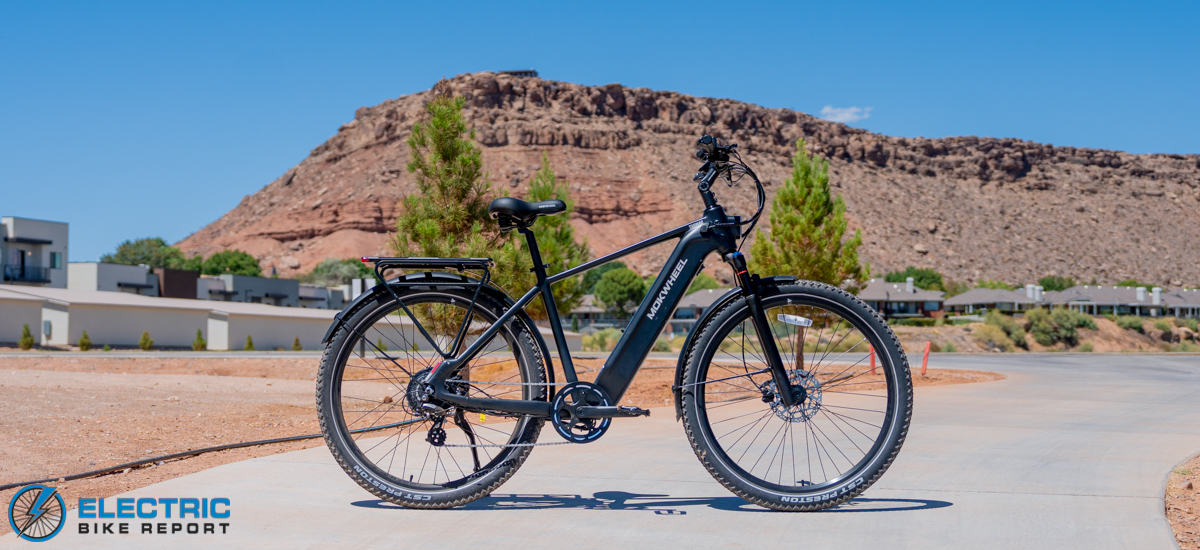
Commuter e-bikes are the e-bike equivalent of a sedan. They’re less likely to spend time sitting idle in traffic during the morning trip to the office, but they tend to be equally dependable for daily use, whether that means long-distance road trips, leisurely Sunday drives/rides, or running mid-morning errands.
When the Tarmac, Mokwheel’s latest commuter e-bike, was revealed, I couldn’t help but try to imagine how it would ride and perform. Based on our previous experiences with the brand, I expected a bike with plentiful power and battery capacity. I wasn’t disappointed; the Tarmac is equipped with a robust 750W hub motor and a sizable 720 Wh battery.
The motor’s engagement and how it delivered power were two factors I couldn’t anticipate until I had the chance to sit on the saddle. It’s my experience that similar commuter e-bikes often favor a reserved, responsive feel, similar to that of an analog bike, but in this case, I must say that the bike took me somewhat by surprise.
I think many riders will appreciate the Tarmac’s much more relaxed approach.
Instead of requiring the rider to put in a significant amount of legwork to provide pedal assistance, it offers an extremely easy experience, thanks to its powerful motor and the programmed speed limits for each of its five power levels. In my experience, pedaling was a breeze, and the motor carried me up to speed with only light pedaling required!
All in all, the Tarmac was fun and enjoyable to ride—but I’ll share more details about that and many other facets of the bike in this review. As with all of our reviews, we measured its speed, braking performance, hill-climbing ability, and range in a series of standardized tests. Keep reading below to learn more!
Class 3 (pedal assist to 28 mph)
NOTE: Our tested bike exceeded stated class ratings
 Pros
Pros- The Tarmac’s pedal assist system (PAS) provides the responsive power of a torque sensor with the easy pedaling and granular speed control of a cadence sensor.
- The bike’s feel and performance are hugely customizable. Users can adjust the throttle and PAS speeds individually, tailor the riding position, and adjust the acceleration force.
- As a Class 3 e-bike with a relatively large battery, the Tarmac is both speedy and capable of extended rides. We exceeded its advertised range in our Range test!
- We liked the stability and versatility of the knobby 29×2.35” CST Preston tires; this bike isn’t just limited to paved streets and paths.
- Riders can detach the bike’s display as a security measure; without the screen, the bike will not turn on.
- It comes well-equipped for commuting, with integrated lights, turn signals, fenders, and a cargo rack.
- With a recommended height range of 5’5” to 6’7”, the bike is well-suited for average to tall riders.
- Looks are subjective, but we found the Tarmac’s frame and color options appealing. It’s both classic Mokwheel and also something new and different.
 Cons
Cons- While the bike’s speeds can be reduced, our test bike shipped with both its throttle and PAS exceeding legal limits. We encourage Mokwheel to match its default settings to the bike’s Class 2 sticker.
- The Tarmac’s standover height of 31-32” makes it best suited for average-to-tall riders. Shorter folks may need to consider a different step-thru option like the Asphalt ST.
- Battery:48V, 720 Wh (15Ah), UL Safety Certification
- Display: Detachable High-Definition Display
- Motor: 750W, 920W Peak, 75 Nm Torque
- Headlight: Head-tube Integrated LED
- Taillights:Integrated LED, turn signals
- Pedal Assist: 5 Assist Levels, Torque+Cadence Sensor
- Claimed Range: 50~60miles
- Throttle:Thumb Throttle
- App:N/A
- UL Certification: UL 2271 Certified, UL 2849 Certification in Progress
- Claimed weight: 66 lbs
- Tested Weight: 67 lbs
- Rider height range: 5’5” – 6’7”
- Total payload capacity: 350 lbs
- Brakes:Tektro TKD171 Hydraulic Disc Brake
- Fenders:Plastic
- Fork:80mm Adjustable Suspension
- Frame: 6061 Aluminum Alloy
- Drivetrain:8-Speed Shimano Altus, 46T chainring
- Grips: Ergonomic Faux Leather with Gel Support
- Saddle: Customized Comfort Leather Seat
- Handlebar: Aluminum Alloy 31.8mm, 680mm
- Kickstand: 6061 Aluminum Kickstand
- Pedals: Plastic platform
- Tires: 29″ x 2.35″ tires
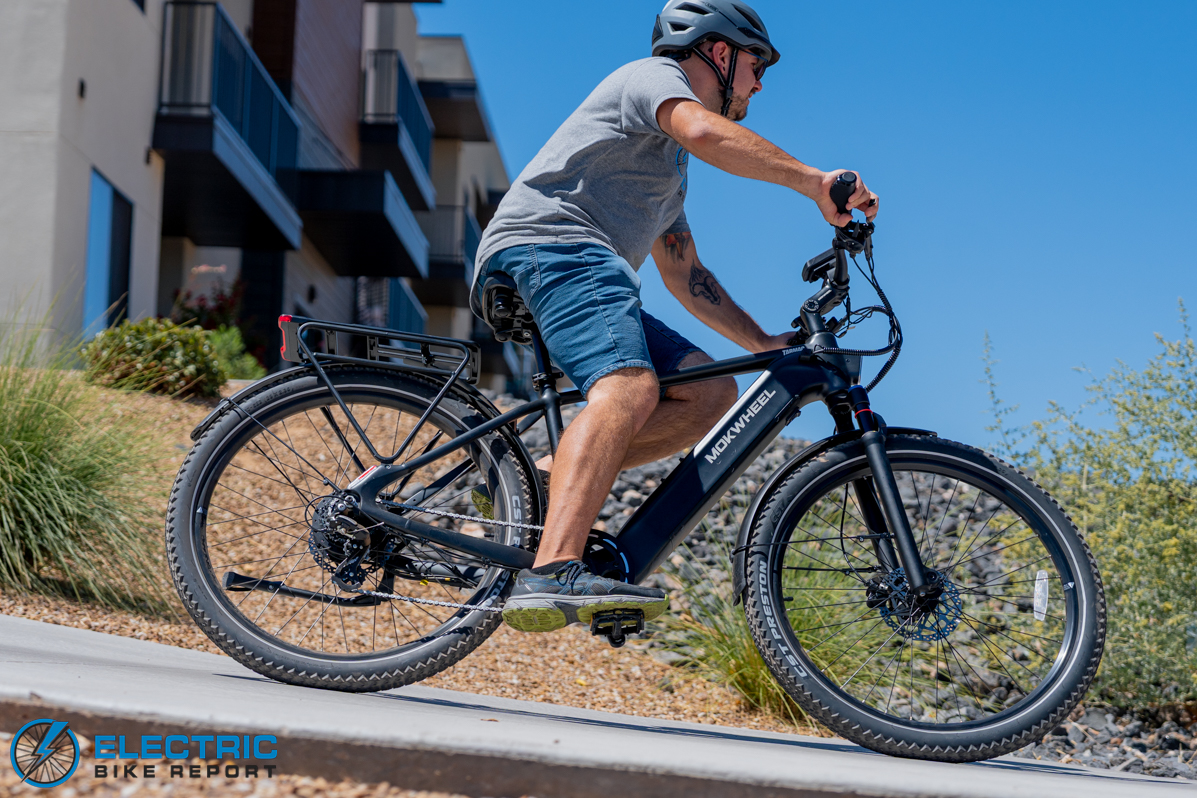
As a Class 2 and 3 e-bike, the Tarmac is equipped with a throttle and can pedal up to 28 mph, allowing riders to safely keep up with traffic.
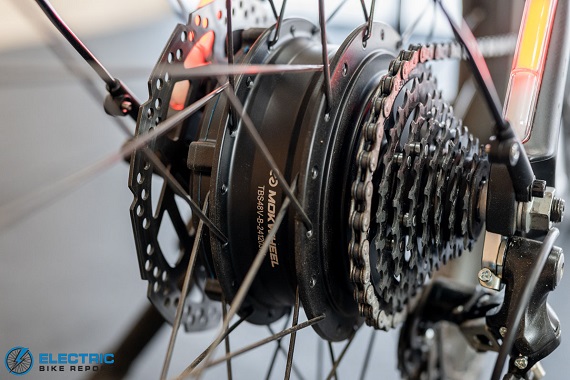
The bike’s 750W rear-hub motor is the star of the show. It mixes the feel of a torque and cadence sensor to make the ride easy.
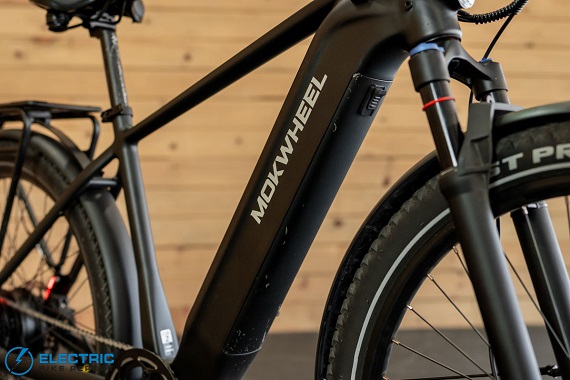
Mokwheel equipped the Tarmac with a 48V, 720 Wh battery. It’s UL 2271 Certified and fully integrated into the down tube.
Mokwheel Tarmac Review: Speed Test
My Speed Test with the Tarmac involved pedaling the bike on a flat, paved course that is part of our local shared-use trail system. I rode the bike in each pedal assist system (PAS) setting, and having gone through the bike’s settings menu to find its pre-programmed speed limits, ensured that those limits were accurate. See the graph of my data above.
In all cases, the pre-programmed speeds were accurate or very close; the display indicates the following limits for each assist level:
- PAS 1 – 10 mph
- PAS 2 – 15 mph
- PAS 3 – 20 mph
- PAS 4 – 25 mph
- PAS 5 – 30 mph
In the lower PAS levels, I found that the Tarmac behaved more like a bike with a cadence sensor than a torque sensor. The motor effortlessly carried me up to the above limits with little pedal pressure.
At higher power levels, it delivered power more responsively by adapting to how much pressure I applied, though the baseline of its output was still relatively high. This meant that the ride was easy and relatively low-effort at all times.
The graph of my speeds shows the data points forming a consistent linear pattern, indicating that the jumps in speed and power between each of the bike’s power levels were approximately the same every time. Such programming results in a predictable feel when moving between power levels, which tends to be intuitive and easy to grasp.
Keep in mind that our testing was done with the Tarmac’s default programming, but also that each of its five speed limits are customizable through the display menu. As such, the bike can deliver more power and higher speeds out of the gate for those who prefer it, or vice versa.
As another portion of this test, I tried out the throttle to see how quickly it accelerated the bike to the Class 2 limit of 20 mph. Acceleration was swift and relatively punchy by default, with steadily-building power and speed. I found it peppy and fun, but riders who prefer a more gradual approach can tailor the bike accordingly through the “Intensity Setting” in the display menu.
It’s important to note that our test bike’s default settings exceeded the legal limitations for Class 2 and 3 e-bikes; as listed above, PAS 5 was set to 30 mph, and the throttle could reach 28 mph. Considering that the bike displays a Class 2 sticker and that many localities are enforcing stricter speed limitations, we encourage Mokwheel to ship the bike to meet these requirements.
Otherwise, the bike performed well in this test, with a well-balanced distribution of power levels, a high degree of customization over its speed limits, and the ability to keep up with traffic on the daily commute
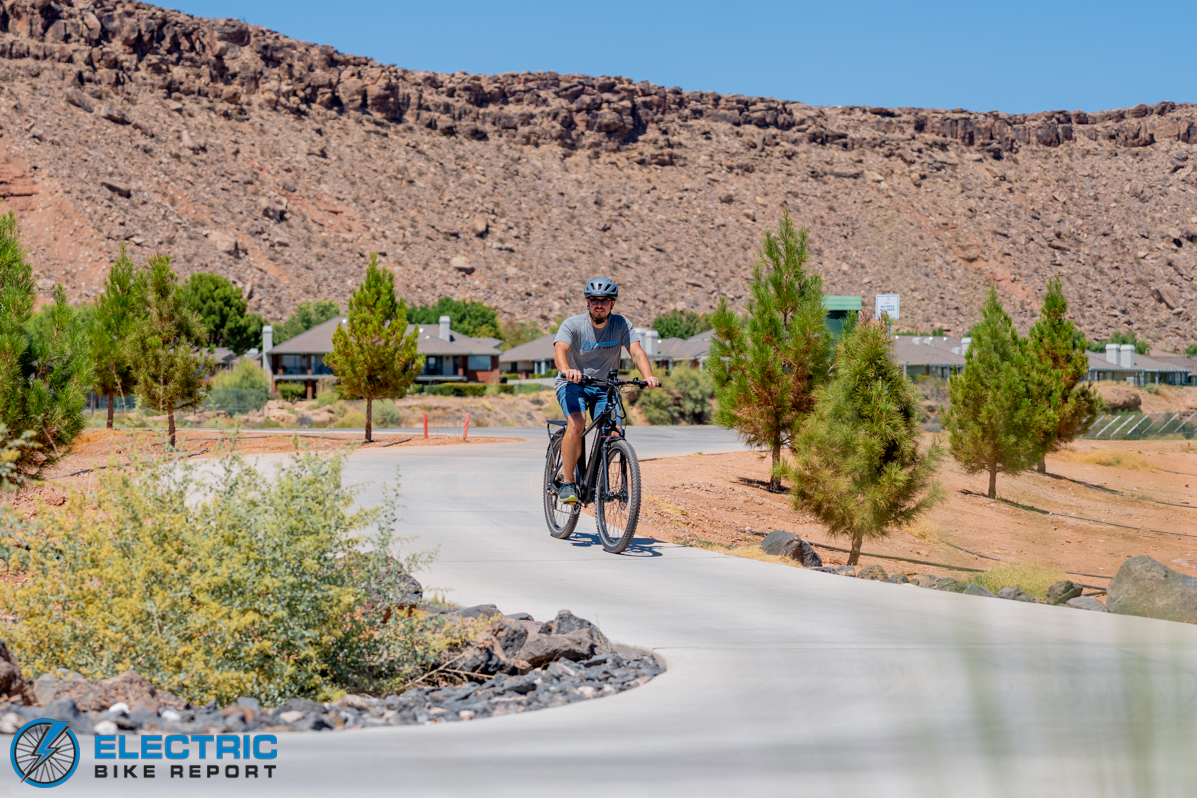
The bike’s fit is adjustable, allowing riders to choose a comfortable upright placement or a sportier, forward-leaning position.
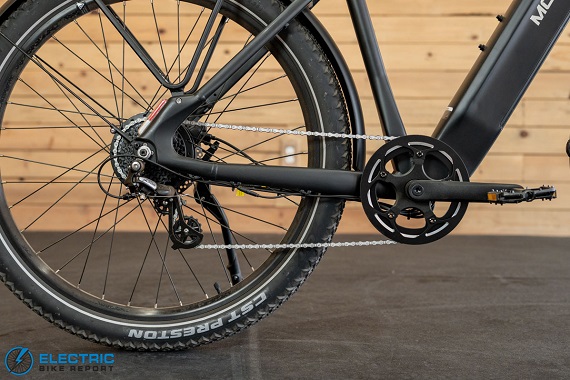
The Tarmac’s 8-speed drivetrain features an 8-speed Shimano Altus drivetrain that was well-matched for its Class 3 speeds.
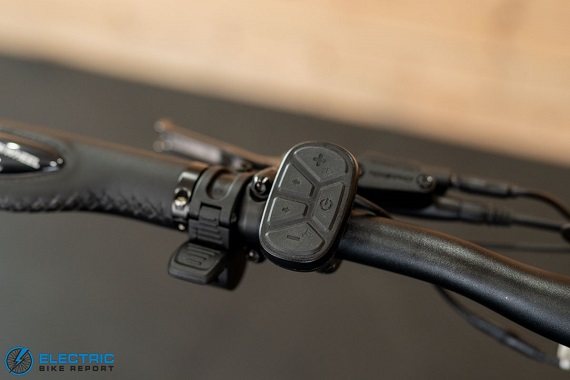
The bike’s throttle and control panel sit on the left handlebar. We found them easy and comfortable to use.
Mokwheel Tarmac Review: Range Test
We tested the Mokwheel Tarmac’s range and the accuracy of its advertised 60-mile maximum using the method explained in the graphic above. As shown, our team was able to exceed its advertised range by a significant margin of over 15 miles!
As a caveat, the shared-use paths where we performed our test had a maximum speed limit of 20 mph, which we adhered to while riding in PAS 5. Be aware that riding at top speed will drain the battery’s charge faster than when traveling at a slower speed.
A group of similar commuter e-bikes we’ve tested recently averaged 36.4 and 69.1 miles in their range tests. As such, the Tarmac’s results were about average in the bike’s high power test and somewhat above average in its low power test.
Two main factors seemed to influence its performance in this test: the Tarmac’s battery capacity and overall motor efficiency.
At 720 watt-hours (Wh), the bike’s battery is slightly larger than the average of 700 Wh among bikes we used for comparison. This difference, although not substantial, likely helped extend its range.
In the Tarmac’s low assist test, its motor also used about one watt-hour per mile less than its peers. The bikes used for comparison average 10.1 Wh/mi, versus Mokwheel’s motor’s 9.3 Wh/mi. This difference, while relatively small, does add up over time—especially when combined with the bike’s slightly above-average battery capacity.
Considering that the Tarmac functions more like an e-bike with a cadence sensor at its lower power levels, and that cadence-based pedal assist systems are often less efficient than those with torque sensors, we’re impressed with its results in this test. Part of this efficiency, as mentioned above, is due to speed; increasing the speed limits of the lower PAS levels would likely reduce the bike’s efficiency.
Our test results showed that the Tarmac performed exceptionally well, keeping pace with its peers and, in some cases, outpacing them. Considering that many riders will likely use the bike’s mid-power PAS settings to ride faster, we expect most folks to fall somewhere between our results.
Even then, however, the Tarmac proved to be capable of covering multiple rides’ worth of miles before needing to be plugged in. When that time comes, the Tarmac ships with a 3-amp charger that should power up the battery from empty in about five hours.
Mokwheel Tarmac Review: Hill Test
With a 750W rear-hub motor, we expected that the Tarmac would have the power to handle challenging hills with ease. We tested its performance using the method described above and found that it did well, but that the story was somewhat more complex than we initially anticipated.
We recently switched our hill test location to the Devil’s Backbone, so we don’t have an enormous pool of similar bikes to compare the Tarmac’s results against. Those for whom we have data averaged 1:51 on throttle power and 1:59 when pedaling, making the Tarmac about 13 seconds slower than average and about 9 seconds faster than average, respectively.
I think those differences make sense when looking at the bike’s motor output in terms of torque and peak wattage.
Historically, a bike’s peak motor power in watts has seemed to influence its throttle results, while its torque correlates more with our pedal test. The Tarmac’s motor peaks at 920W, versus a higher average of 983W among similar commuter e-bikes we’ve tested. As such, its slower throttle time lines up.
The bike’s torque output of 75 Newton meters (Nm) is above, but much closer to, the average of 72.5 Nm, so its slightly faster pedal time also makes sense.
My personal experience with the Tarmac also lines up with Justin’s results. I took the bike to our secondary test hill near the office to gauge its climbing capabilities. When pedaling, it felt peppy and relatively speedy, but I noticed that it was noticeably slower when I relied solely on its throttle.
Our test scores and my personal experience demonstrate that this bike is more than capable of helping riders climb hills. With a relatively powerful motor, it provides most riders with the option to throttle or pedal when approaching large hills and relatively steep inclines.
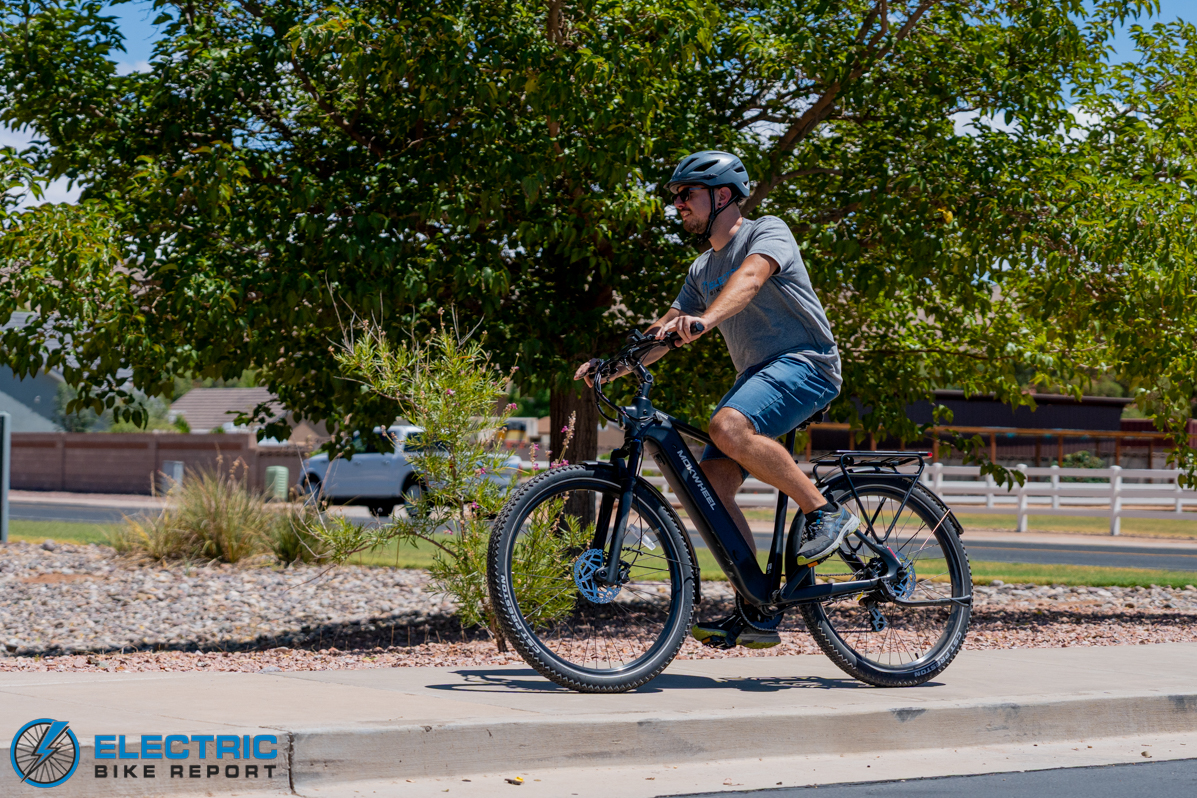
The bike comes in three color options: Phantom Black, Marine Blue, and Pine Green.
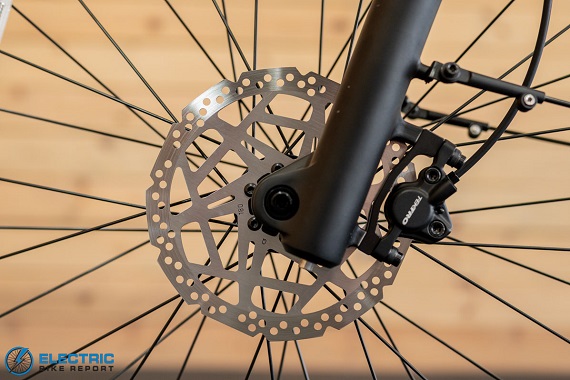
We recommended that Mokwheel increase at least one of the bike’s rotors from 180mm to 203mm for improved performance.

The 29×2.35” CST Preston tires are knobby enough to give the bike great stability and traction on smooth, unpaved surfaces.
Mokwheel Tarmac Review: Brake Test

Using the method explained above, we tested the stopping power of the Mokwheel Tarmac’s hydraulic disc brake system. The bike’s final score was an average stopping distance of 25’2”.
A group of similar commuters we’ve tested, including the best commuter e-bikes, stopped in an average of 21’11”, so the Tarmac’s result was over three feet longer than average. Based on our history and my experience testing the bike, I must admit that I was somewhat surprised to see such a significant difference between its score and the average of similar bikes.
Going by feel, I would say that the Tarmac performed better than its score would suggest. The brakes felt appropriate and functioned well during my testing. At the same time, the 25-foot mark is right around the point where we start recommending some changes, so let’s consider why and how its performance might have been affected.
A bike’s weight, brake system, and tires all contribute to its performance in this test.
The Tarmac is equipped with the Tektro TDK171 hydraulic brake system with 2-piston calipers and 180mm rotors. We’ve tested these brakes on a variety of other e-bikes, and in general, it has performed quite well.
Additionally, the Tarmac weighs roughly 67 lbs, including its battery, while similar models we used for comparison weighed approximately 65 lbs. As such, nothing is out of the ordinary regarding its specs.
The Tarmac’s tires were the bike’s only component that stood out as being somewhat out of the norm when compared to similar commuters; there’s a good chance that their knobby tread simply didn’t provide as much grip as we’re used to seeing on other bikes with smoother tread.
Personally, I like the Tarmac’s 29×2.35” CST Preston tires quite a bit! Compared to the smoother tires we often find on similar commuters, they give this bike more off-road trekking potential. As such, I’d hesitate to change that characteristic of the Tarmac.
With that in mind, I think I’d lean more towards recommending that Mokwheel increase the bike’s brake rotor size. On some other e-bikes, the TDK171 system was paired with a mix of 203mm and 180mm rotors (instead of 180mm rotors on both wheels, in the Tarmac’s case).
Increasing the rotor size would help dissipate heat faster and improve the bike’s overall braking performance, resulting in a more comparable outcome to similar models we’ve tested. Alternatively, potential customers who don’t plan to ride on unpaved paths or roads might consider swapping to a street tire to get better overall traction when braking.
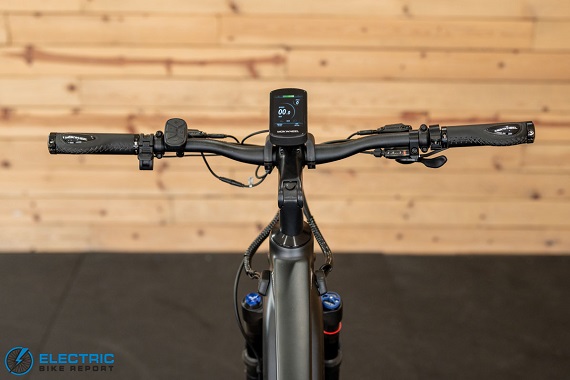
I found the 680mm handlebars to be a good match for the bike’s size and weight. Steering felt controlled and predictable.

The Tarmac’s suspension fork offers 80mm of travel as well as lockout and preload adjustment.
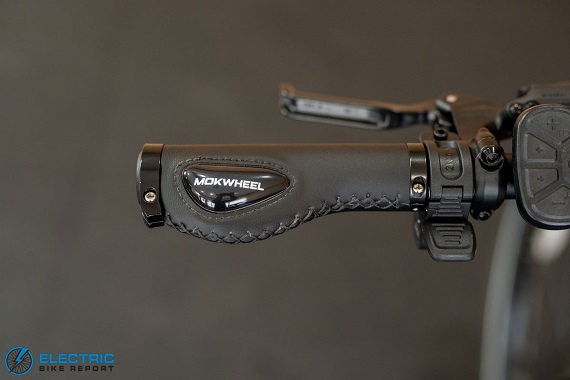
All of the bike’s controls are easy to reach from the ergonomic grips, which feature a gel bump in their flared support area.
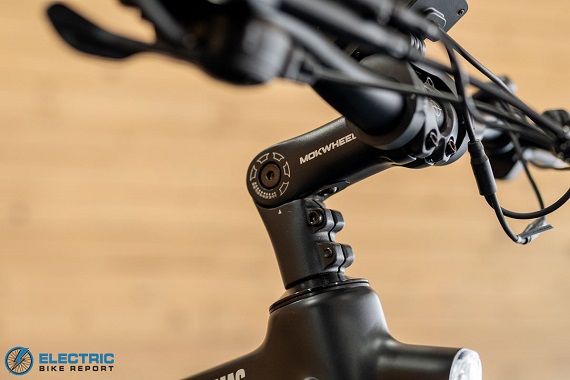
The adjustable stem offers customization over the bike’s fit. Users can adjust the handlebar height and reach for comfort.
Mokwheel Tarmac Review: Ride Quality
While it’s nearly impossible to understand how a bike feels to ride without physically sitting on it, we do our best to explain the factors that influence the experience in this ride quality section.
Starting with geometry, sizing, and adjustability, the bike features a sporty frame that positions its rider in a forward-leaning posture typical of the commuter style. It is offered in two frame sizes: a Standard size for riders between 5’5” and 6’5” and a Large frame for those from 5’7” to 6’7”.
It is somewhat unusual in my experience for there to be so much overlap between frame sizes; a more typical breakdown of the height ranges might be more like 5’5” to 6’1” for the Standard frame and 5’11” to 6’7” for the Large.
Case in point: the Tarmac’s standover height is 31-32”, depending on the frame size, making the bike best-suited for those of average height and above. Reducing the Standard frame’s wheel diameter to 27.5” instead of 29” would likely help make the bike more approachable for shorter riders (this is a common wheel size on commuters, regardless).
At the time of writing, Mokwheel does not offer a step-thru version of the bike, so riders on the shorter side (or those who prefer easier mounting and dismounting) might need to consider another option; I’d recommend the Asphalt ST we reviewed previously, which has a recommended height range as low as 5’2”.
At 5’11”, I was very much in the middle of the Standard frame’s fit range. Its sizing felt both comfortable and appropriate, with a long seatpost and an adjustable stem that allowed me to adjust the bike’s feel. I achieved proper leg extension for efficient pedaling, a moderate reach that was neither too cramped nor stretched out, and a slightly more upright riding position for my personal comfort.
When I had my preferences set, the bike felt both sporty and relaxed. With some weight on the handlebars, steering and cornering felt controlled and predictable. Being somewhat more upright made long test rides (I covered the 37+ miles in our max PAS range test) comfortable and enjoyable.
I mentioned the tires previously in the Brake Test section above; these, in combination with the 80mm suspension fork, gave the Tarmac a confident feel when riding on relatively smooth dirt and gravel areas.
I’ve also discussed the feel of the pedal assist system at length, but to reiterate, the bike delivered enough power in all assist levels to make pedaling easy. At low levels, it required very little pedal pressure to get up to speed, but at higher levels, it seemed to respond more to changes in the amount of pressure I applied.
Overall, I think the Tarmac is generally well-equipped for its price. I like that it has integrated lights and turn signals, along with fenders and a cargo rack. The head-tube-integrated headlight, in particular, was interesting; it’s a great look that’s different from our usual experience with Mokwheel, and it reminded me of some e-bikes I’ve tested and enjoyed from a handful of other brands.
I also consider the removable display, which prevents the bike from being ridden under power when disconnected, to be a solid security feature. I think it would also be great to see a cafe wheel lock for a little extra physical theft deterrence, and I am not the biggest fan of the gel bumps on Mokwheel’s custom faux leather grips, but those are minor concerns.
As I referenced in the Speed Test section, the bike’s display menu offers a variety of customization options for the bike’s speed and acceleration. It also allows users to select between three and five pedal assist levels, choose whether the throttle is active, and if so, determine if it functions from a complete stop.
All in all, the bike was comfortable, it handled well, and it was fairly straightforward to operate. Additionally, while we did identify some downsides, it felt stable while riding, and it is relatively versatile in terms of where it can be ridden. This commuter isn’t limited to paved streets and paths alone!
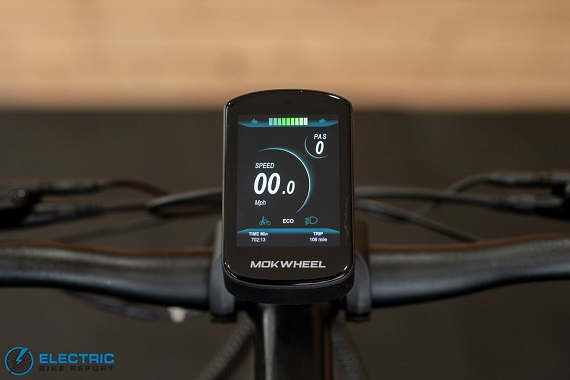
The color display is generally easy to read. As a security feature, it’s also removable to reduce the likelihood of theft.
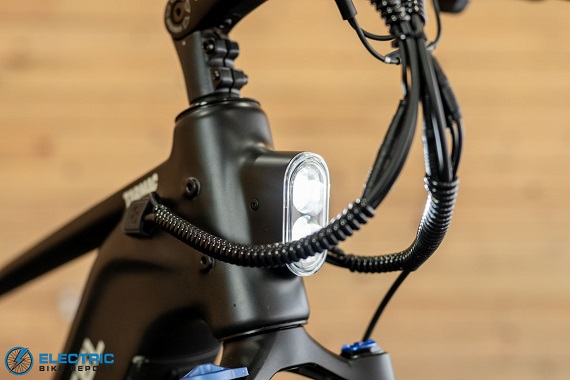
The head-tube-integrated dual-LED headlight looks cool, though it may present some challenges if or when it needs to be replaced.
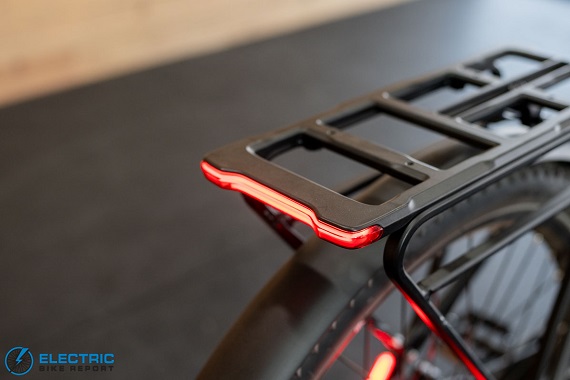
The Tarmac’s cargo rack can carry up to 55 lbs-worth of gear, groceries, etc.
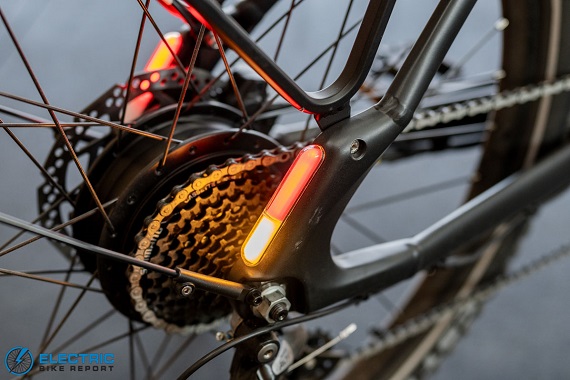
Its chain stays feature integrated tail/brake lights and turn signals.
Mokwheel Tarmac Review: Summary / Where to Buy
While many commuter e-bikes on the market offer a relatively active and potentially demanding experience, I was happy to note that the Mokwheel Tarmac adopted a lower-effort approach suitable for aging riders or those seeking a bike with impactful levels of pedal assistance and a granular level of control over their speed.
The bike generally performed well in our series of standardized performance tests. We recommended some changes to its brake system to shorten its average stopping distance (a change that some consumers may also consider), but otherwise, it showed well-balanced programming through its pedal assist system, along with excellent range and good climbing power.
More than that, the user experience is highly customizable. Whether adjusting the individual speed limits of its five assist levels or tailoring the handlebar height to suit personal preferences, the Tarmac offers riders a wide range of options that influence how it feels to ride.
Our test riders found it to be comfortable, generally well-equipped, and capable for both on-road commuting and light off-road adventuring.
Our largest points of critique about the Tarmac relate to its sizing and speed. We encourage Mokwheel to ship the bike with its default throttle and PAS speeds set to match legal requirements. Additionally, potential buyers should be aware that the bike’s two frame sizes are best for those of average height or taller, though Mokwheel has other options suitable for shorter folks.
Otherwise, we’d expect the Tarmac to be a great commuter for those who want a bike that’s fun and easy to pedal, one that’s pretty customizable, and also one that’s capable of long rides without needing to be recharged very often.
Happy Riding! Make sure to let us know if you have any questions or if you think we left anything out in this review of the Mokwheel Tarmac down in our comments section.



